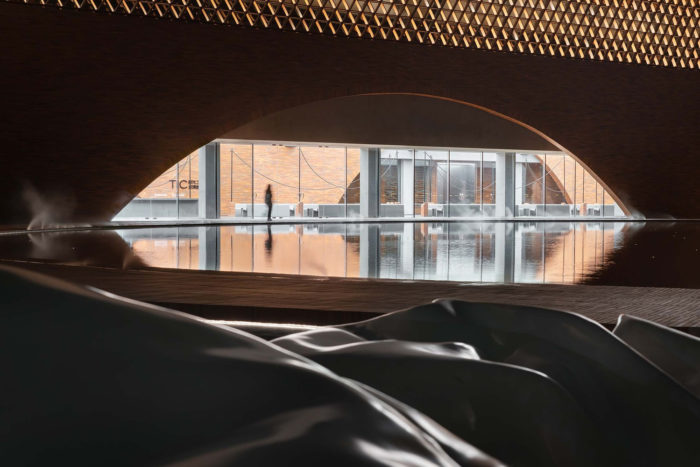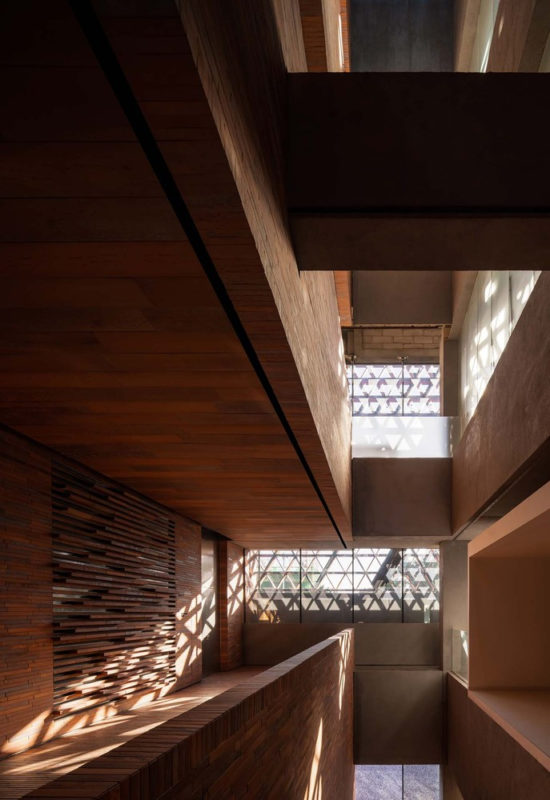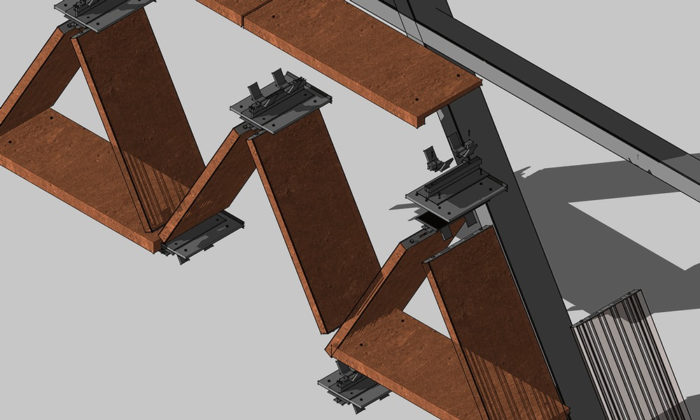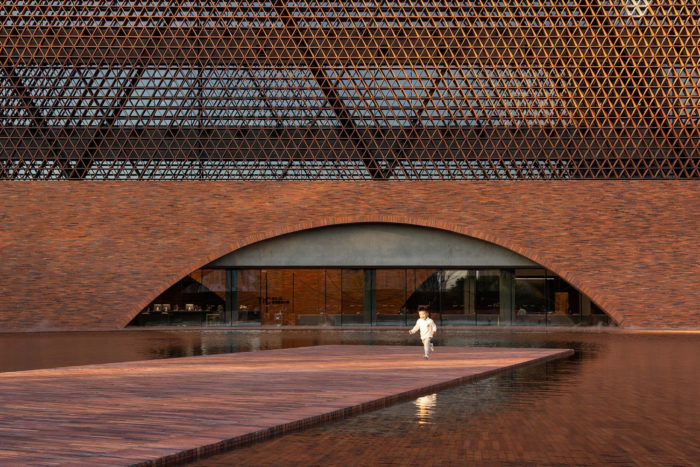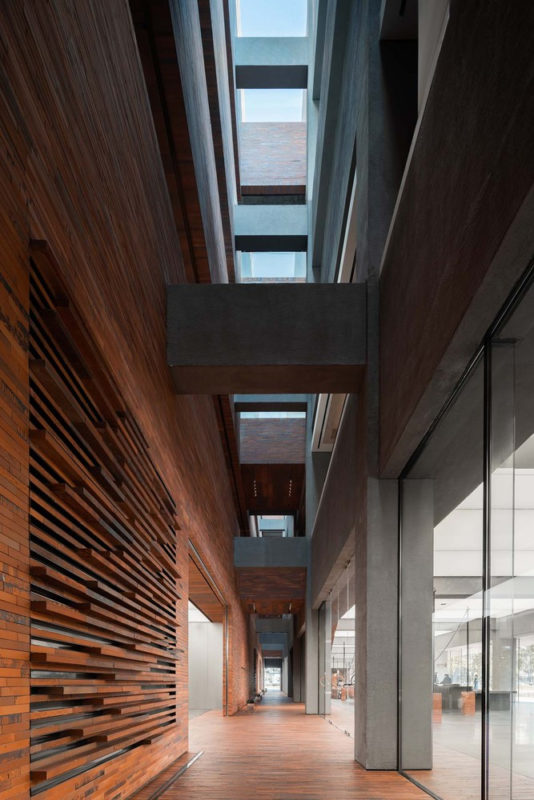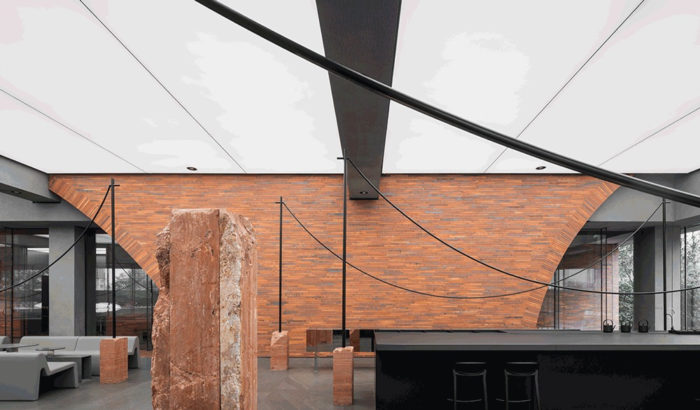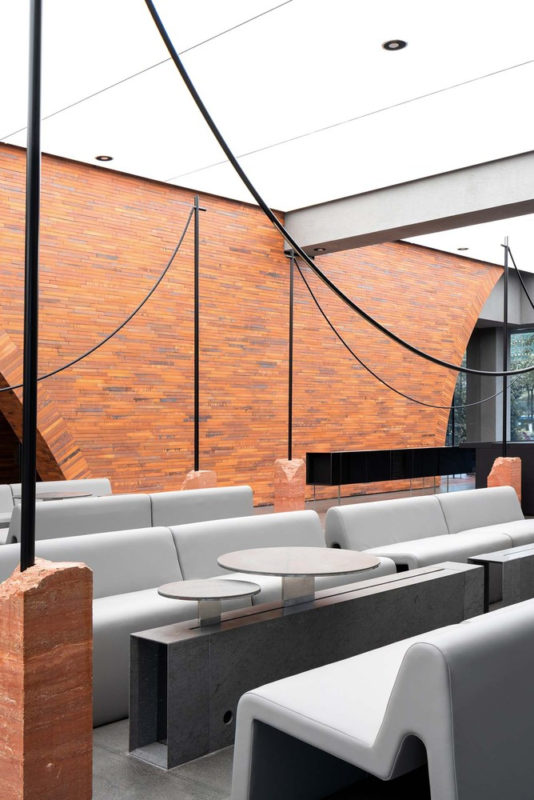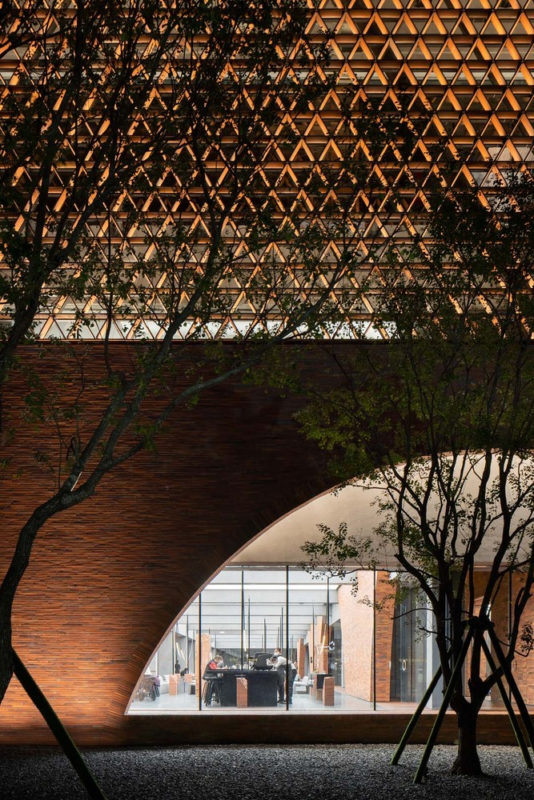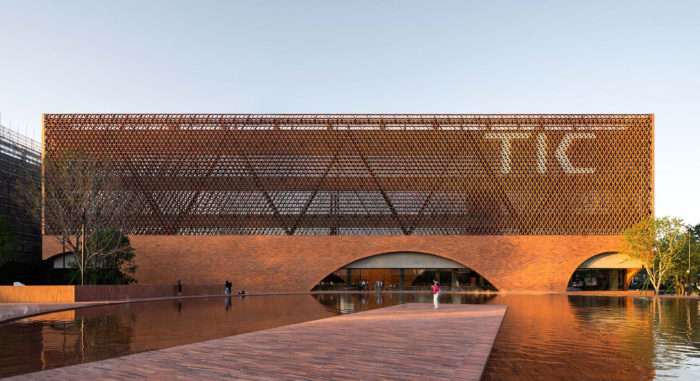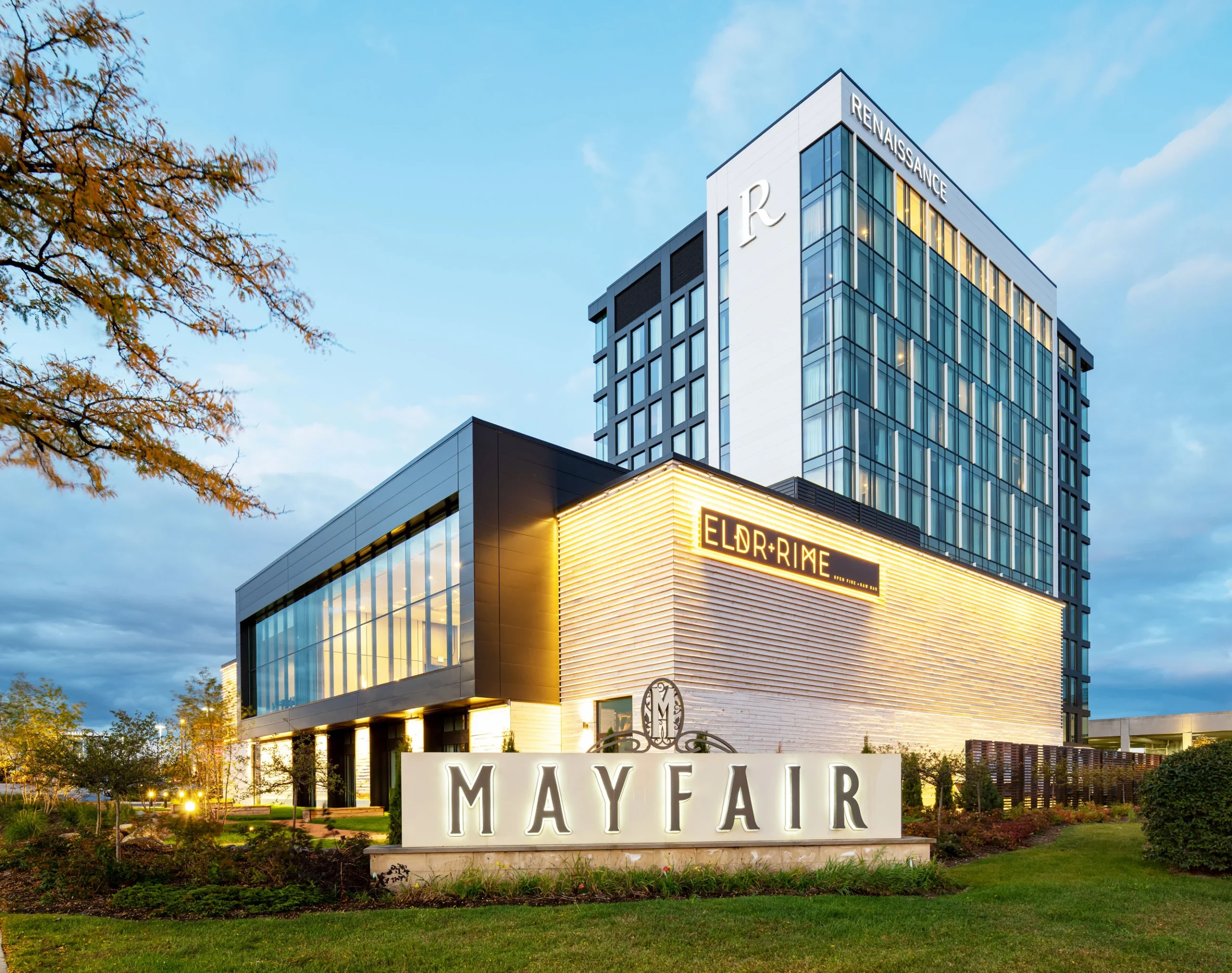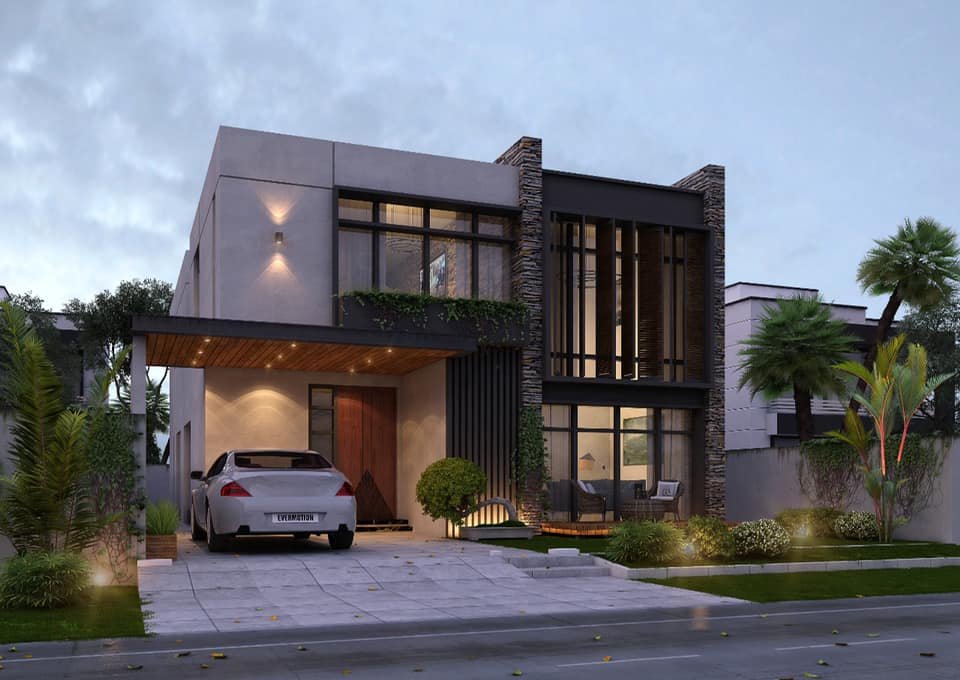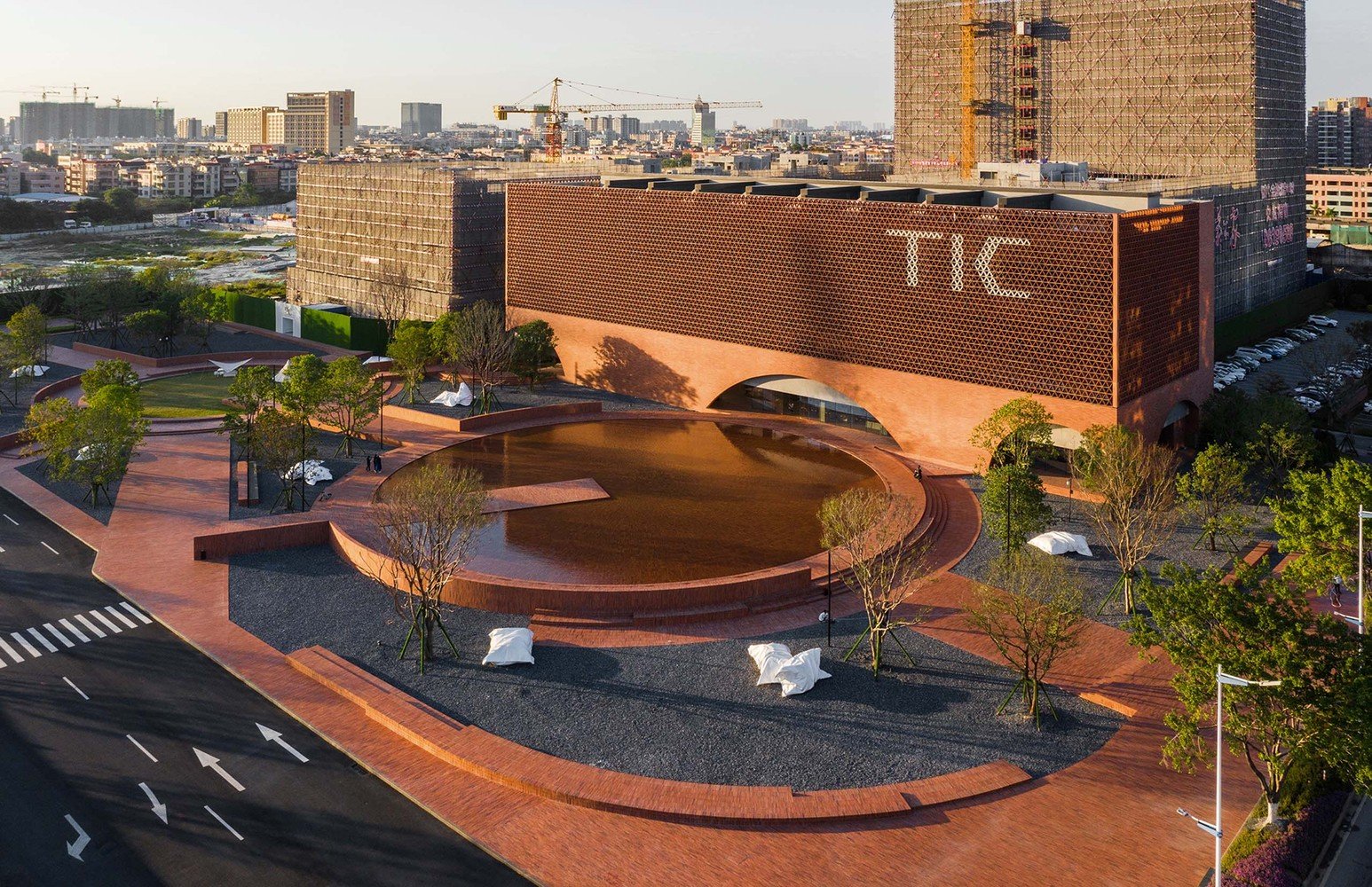
TIC Art Center | DOMANI
The pool’s viewing platform offers a panoramic view of the building’s main façade. The TIC Art Center’s highlight is the mesh-like double-layer curtain wall system, which is both visually stunning and technically advanced. By combining traditional ceramic bricks with modern curtain wall design, a unique grid masonry effect is achieved. The façade is made up of equilateral triangular modules that form a mesh pattern. The curtain wall’s concealed anti-dropping nodes ensure the aesthetics of the openwork masonry and prevent damage and falling of the ceramic panels. The ceramic mesh curtain wall’s concealed aluminum alloy unit is produced with high precision through industrialized production, improving installation efficiency significantly.
The TIC Art Center Concept
The inner-layer curtain wall incorporates 2,200mm long clear glass panels, which offer an enhanced view from the inside and facilitate straightforward installation. To eliminate the requirement for visible frames, the glass panels are thickened and laminated, optimizing the utilization of interior space. This particular design emphasizes the transparency of the glass curtain wall and establishes a transparent background for the outer mesh curtain wall constructed from triangular ceramic bricks.
The TIC Art Center’s “passive design” includes a double-layer curtain wall system on the east, south, and west facades. This system consists of a clay brick grid, a cavity, and insulated Low-E tempered glass. Compared to conventional curtain walls, this system reduces heat conduction by about 30% and estimates cooling energy consumption by 30%. Additionally, the 240mm-thick side openwork brick curtain wall system acts as a sunlight filter, preventing glare from direct sunlight while enhancing the softness of the light through refraction.
The construction of an arch on a façade wall. The arch has a maximum span of 29 meters and is made up of cantilever beams and upturned overhanging folding slabs at the top, which gives it a higher height than the beams between floors. In the middle of the arch, there are cantilever beams, hanging columns, and beams to achieve a wide scale. The non-arch section is constructed using cantilever beams and brick walls.
The Big Dream is a collection of outdoor installations created by A&V. These installations, inspired by Earth Art and BDO fantasy, depict the metaphor of an invisible giant and his vast dreams. The designs feature a large circular square that contrasts with the installations, emphasizing the conflict between rationality and artistic sensibility. To ensure safety, the structures are reinforced and made climbable for children.
The Interior Design Of The TIC Art Center
The main focus of the interior functional planning is to organize the spaces vertically in the main building. The integration of concealed engineering within the architectural structure allows for more flexible mixed-use in the future. The reception area on the first floor aims to create a transparent boundary between the architecture and the landscape. The interior design is centered around the concept of de-interiorization. Instead of traditional interior lighting solutions, a large intelligent preset light film ceiling is used to balance indoor lighting with natural daylight.
This lighting strategy is similar to controlling top lighting in photography, which helps create a sense of spaciousness in the space. The architectural structure is emphasized, with the electromechanical and fire systems following the extension of the beam and column systems. The interior materials are directly derived from the architectural elements, creating a bond between the interior and exterior while also reducing construction costs and risks.
The integration of interior space and architecture is important for creating a visually appealing and immersive experience for visitors. The lighting product series, inspired by traditional clotheslines, is used as art installations and provides additional lighting for different areas, particularly on the first floor. The curves of the lighting fixtures complement the building and landscape’s circles and arcs, creating a harmonious aesthetic. In the lounge area, the furniture explores a balance between a traditional table and side table, with platforms of different heights that have pre-embedded tracks to accommodate various dialogue scenes. The attention to detail is evident in the refined stone workmanship.
A large bar counter helps to create an open working area by breaking the boundary between waiters and customers. The furniture design in the space showcases a sense of flexibility and order while also accommodating the diverse range of users.
The architecture is divided into a front and back section, with a “valley” passageway in the middle. This passageway creates a connected and interactive space within the building. It separates the main displaying building from the operational annex, allowing for a continuous touring experience. The building’s design allows for multiple functions and changes throughout its lifetime. The main and annexed building volumes are connected by beam bridges, offering visitors a unique view of the interplay between space, light, and shadows.
In China, the color of clay bricks in folk houses varies from dark to light as you move from north to south. The traditional method of making clay bricks using humus caused damage to arable land and forests. Nowadays, industrialized production of clay and terracotta bricks has replaced this traditional method. However, the use of red bricks is still popular in folk buildings due to their affordability.
As urban construction standards have evolved, traditional bricks and masonry techniques are no longer suitable for large-scale public buildings. To preserve traditional craftsmanship, a deeper examination and a redesign of adaptable methods are needed. The red bricks used in the TIC Art Center were created using 25 sets of molds, resulting in a wide range of sizes and trimming systems. The scale and proportion of the bricks were modernized to meet the requirements of “hand-holdable bricks” through research on controllable furnace conditions, material performance, applicable structure, process stability, and production costs. This refinement process has led to the production of high-quality bricks.

